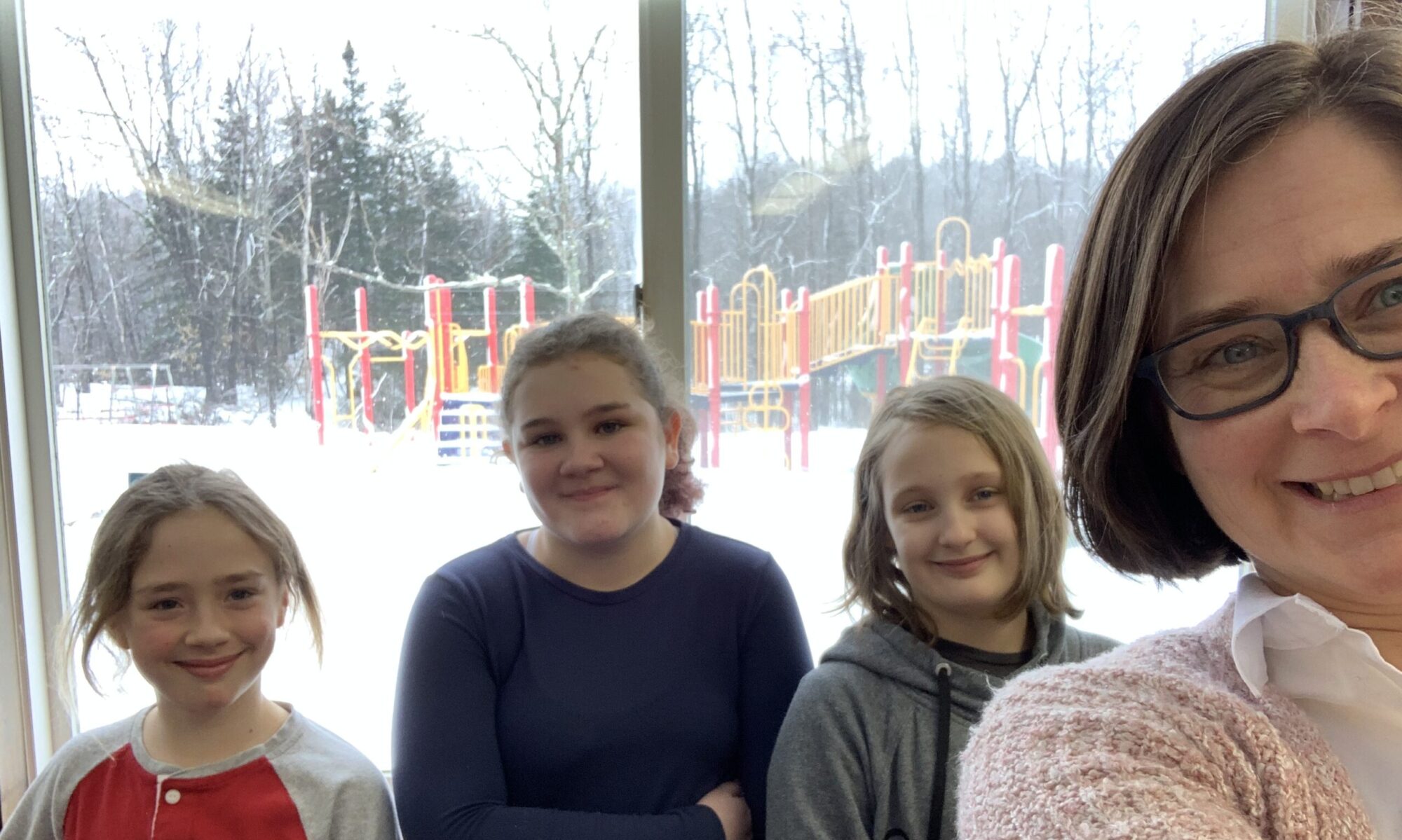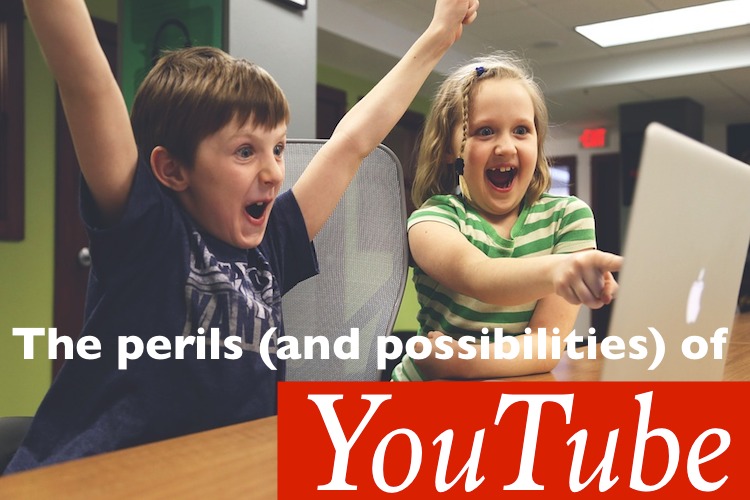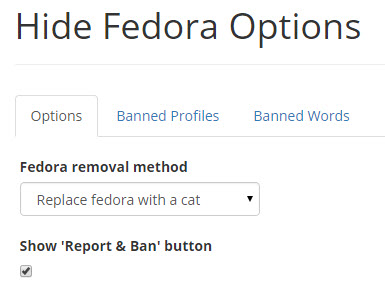How to make YouTube appropriate for the classroom
 YouTube can provide students and educators with hundreds of powerful educational videos that can deepen learning, and we cover finding those videos elsewhere. But a lot of times actually showing those videos to your students requires navigating a minefield of irrelevant results, unpleasant comments and ads featuring people who are going to catch pneumonia unless they put a shirt on.
YouTube can provide students and educators with hundreds of powerful educational videos that can deepen learning, and we cover finding those videos elsewhere. But a lot of times actually showing those videos to your students requires navigating a minefield of irrelevant results, unpleasant comments and ads featuring people who are going to catch pneumonia unless they put a shirt on.
But it can be done: let’s look at ways to make YouTube appropriate for the classroom.
What’s on YouTube?
Here. Do this quick experiment. Go to YouTube and in the search field, enter “oranges”. That’s it. Hit Search. What were your results like? Mine were …mixed at best. The top ones were:
- A trailer for a movie called “Dirty Grandpa” (I do not want to know. Do not tell me. Not even in the comments.)
- An ad for a wheelchair-accessible van
- Three short videos featuring The Annoying Orange, which features an animated orange telling obnoxious middle-school jokes, one of which features a homophobic slur and ends in (animated) violence. I didn’t watch the others.
- A music album by the group Taxonomy
- A video tutorial on peeling oranges the easy way
- A super-useful video showing how oranges are grown and harvested
That last video provides a ton of useful, in-depth knowledge that would be amazing in an Economics or Environmental Sciences unit, but that’s only one link out of six, where the other five ranged from off-topic to offensive. That’s a very poor signal-to-noise ratio, so I can definitely understand why some educators have a strong aversion to this otherwise incredibly powerful platform.
And that’s without even looking at the ads.
Or the comments. Don’t get me started on the comments.
Two ways to make YouTube appropriate for the classroom
1. Blocking and filtering tools
Here are a few of our favorite filtering tools for YouTube:
- Viewpure: a browser-based tool that lets you enter in a YouTube url and the software strips away surrounding advertising, comments — even the pesky 0:15 ads at the beginning. Try it with this takedown of Matt Damon’s life expectancy on Mars.
- This Chrome extension, Hide YouTube Comments, does what it says on the tin: it hides comments on YouTube videos. All of them.
- This Firefox plugin, No YouTube Comments, works similarly for the Firefox browser.
- And this spectacular piece of coding, Hide Fedora, gives you the option of replacing negative comments with cats in Chrome, Firefox and Opera.
Yes, cats.
2. Teaching your students appropriate engagement with problematic online content
Yeah, this one’s a toughie, and it’s only going to work for certain age groups, but bear with me.
You and I both know that when you’re not looking, your students are bopping around the internet watching the “Dirty” version of Beyoncé’s Formation, and even in the “Clean” version Bey uses some mighty salty language and there is no amount of pixelating that can obscure what she’s doing with her hands. But those objections aside, she’s also working with a lot of historically relevant themes: the Black Power movement, Dr. Martin Luther King, Hurricane Katrina, violence against Black women, religious themes, and the whole landscape of Black Southern womanhood, in a way that arguably no one else is.
No one else, that is, who has such a wide popular reach.
(Here’s a really fascinating and nuanced analysis of “Formation” if you want to delve further, but it too features some salty language.)
Maaaan I WISH I could do a case study of Beyonce’s “Formation” with my English classes. So many themes to examine!
— Ms. V (@TheOnlyMsV) February 8, 2016
There are, obviously, quite a few barriers to teaching Beyoncé in school, as detailed by @TheOnlyMsV here, but it’s emblematic of content that students find compelling but which also contains problematic elements.
That’s kind of YouTube in a nutshell.
There’s something vaguely unsettling about ViewPure’s concept of “purifying” videos for student consumption, even if that is the best way to bring the videos into compliance with COPPA. Your students don’t live in a purified world. Their lives are messy and difficult and inspiring and chaotic, and to expect them to turn that off once they get online is unreasonable. The trick is to give students age-appropriate tools to help them use Internet content to help them move forward.
Learning how to leave comments (that don’t get turned into cats)
Take YouTube comments, for example. (Take them far, far– okay, I’ll stop.)
Super-smart educator Dave Baroody found this extensive Google Doc for getting in-depth on teaching students how to leave comments, respond to other users’ comments and conduct civil disagreements online. As Baroody pointed out, it’s especially great for working through this process with middle school students.
So how about it:






How to make #YouTube appropriate for the classroom https://t.co/FUFsTR6gtS https://t.co/DJWvfcpEfC
The Perils and Possibilities of YouTube https://t.co/Ra8FLnYaAb
For the p.m. crowd: How to make YouTube appropriate for the classroom https://t.co/e1ADcSOL0U
RT @innovativeEd: For the p.m. crowd: How to make YouTube appropriate for the classroom https://t.co/e1ADcSOL0U
The Perils and Possibilities of YouTube https://t.co/FOOKzeX77A
RT @pennybishop: The Perils and Possibilities of YouTube https://t.co/Ra8FLnYaAb
The Perils and Possibilities of #YouTube – Innovation: #Education https://t.co/pOxKBP3bWv via @rightrelevance thanks @innovativeed
RT @innovativeEd: How to make #YouTube appropriate for the classroom https://t.co/FUFsTR6gtS https://t.co/DJWvfcpEfC
The Perils and Possibilities of YouTube https://t.co/qHrhj0NR7t via @innovativeEd
Creating a website specifically for your book, posting on social networking websites like Facebook and Twitter, or even writing an online essay about your work are a few options. You may boost your book’s exposure and prospects of success in the future by putting time into promotion now.
Hi there,
Your article on “The Perils and Possibilities of YouTube” is a compelling read! It’s fascinating to see how YouTube, as a platform, has become both a source of great potential and a subject of concern.
You’ve done an excellent job of highlighting the positive aspects of YouTube, such as its role as a powerful tool for content creators to showcase their talents and connect with a global audience. The democratization of media through YouTube has certainly transformed the way we consume content.
On the other hand, the risks associated with the platform, particularly with regards to misinformation and harmful content, are indeed pressing issues that need to be addressed. The responsibility that comes with the vast reach of YouTube cannot be underestimated.
As a viewer, I have experienced the positive side of YouTube, discovering talented individuals and learning from a diverse range of content. However, it’s crucial that we also recognize the challenges and actively work towards creating a safer and more responsible online environment.
Kudos to your team for shedding light on this complex topic and presenting it in such a balanced and insightful manner. I thoroughly enjoyed reading the article and gaining a deeper understanding of the dynamics at play on YouTube.
Looking forward to more thought-provoking content from your publication!
In a world where content is king, our mission is to empower businesses, authors, academics, and visionaries with the power of words. Whether you need to inform, persuade, entertain, or educate, Writers of USA is your trusted partner for all your writing and content needs. Transform your ideas into impactful words with us, and let your message resonate with the world.